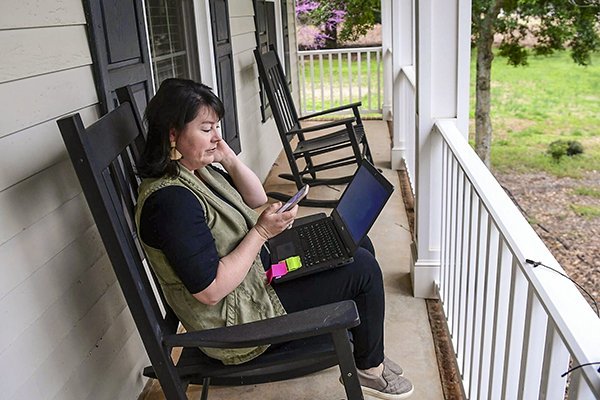Tens of millions of students are dealing with massive upheaval to their educations and daily lives with their schools shuttered indefinitely to thwart the spread of the coronavirus. Add to that fears over a pandemic that could sicken them or loved ones, students now more than ever need strong coping skills to adjust to this new reality that will likely, for many, extend through the end of the school year and beyond.
But should social-emotional learning really be a focus for educators right now as they scramble to figure out how to teach their classes remotely? And how can educators even continue to foster students’ social-emotional skills when they aren’t in class together? To answer that first question, yes, said Marc Brackett, a professor at Yale University and the director of its Center for Emotional Intelligence.
Social-emotional learning is critical to managing anxiety at this time, he said. One place to start, said Brackett, is to try a technique he calls psychological distancing.
Teachers can encourage students to stop thinking about themselves and instead ask: “‘Well, what would I do to support my best friend who was telling me they were really worried about the coronavirus? What would I say to them?’” Brackett said.
“And all of the sudden, they start thinking about all of these strategies that they would use to be compassionate to someone, but that they may not use for themselves.” Students should examine what they are saying to themselves—consciously or not—inside their heads and to ask themselves, ‘is their self-talk helpful?’
“Many educators are already trying out different tactics to teach or infuse social-emotional learning into their remote lessons,” said Karen VanAusdal, the senior director of practice at the Collaborative of Academic and Social Emotional Learning, or CASEL.
“It can be simple things, such as sending daily notes, or, as some educators are doing, morning meetings with their classes where they can build community and do check-ins with young people to see how it is going,” said VanAusdal. For younger students, some teachers have been reading books aloud to their students virtually and then reflecting on the social-emotional skills of the characters in the books, said VanAusdal. For older students, VanAusdal recommends teachers ask students to examine the social-emotional attributes they’re seeing in leaders right now and to ask students how those qualities are helping the country through the crisis.
VanAusdal said she has seen several examples of principals and teachers making videos of supportive messages and sending them to their students. Those are also ways to reach students who may be struggling to connect because they don’t have a computer or internet access at home, said VanAudal.
Kids—and adults—rely on social connections to get through difficult times. But the era of social distancing has upended all of that. “So, we have a lot fewer tools in our tool kit to manage stress in these situations,” said Bradshaw. “That’s why a lot of interpersonal skills are really going to be critical to helping kids manage this kind of stress.”
Analysis:
While its important for educators to show concern for their students’ progress in cognitive development during the transition into online education, a lot of learning at this age happens in terms of social interaction. This article highlights an important and often overlooked aspect of going to school, the education that happens from interacting with peers and adults outside of their parents. For a lot of students, teachers serve as role models and mentors outside of simply educators. Connection with people their own age can be vital for mental and emotional health. There’s a lot of socio, emotional type of learning that happens for elementary students. And it’s just as difficult to deliver this kind of education through remote outlets. Finding a way to replicate the same social-emotional development that students receive in school in a more separated landscape (online school) presents an interesting design problem.




